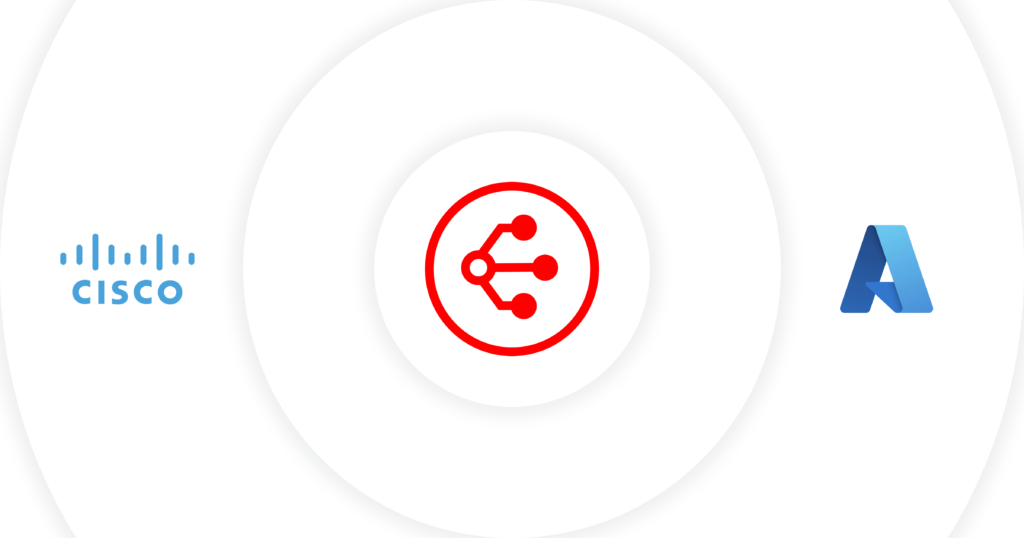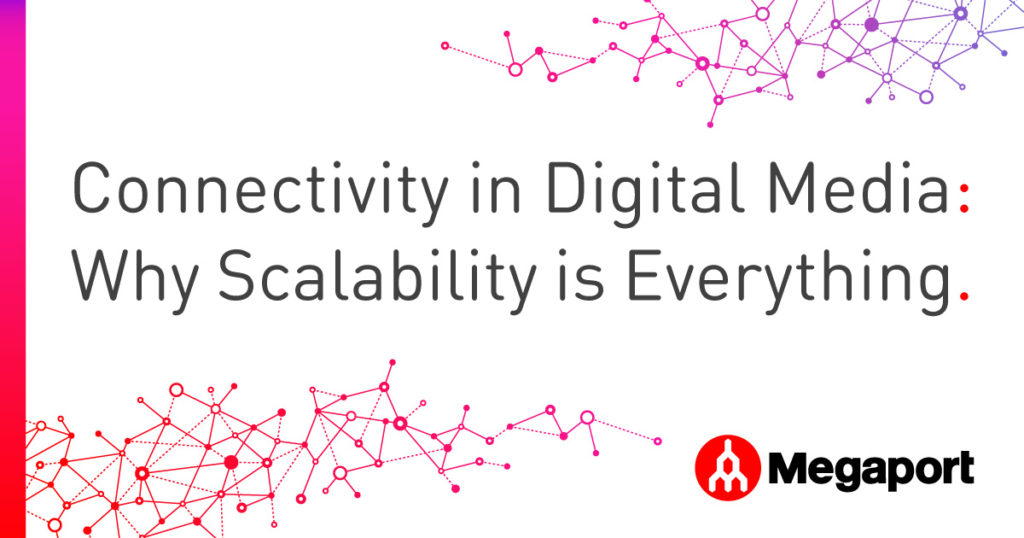
When to Move From Public Internet to Private Connectivity
- Cloud networking
- November 19, 2025
- RSS Feed
By Brian Bowman, Senior Solutions Architect
Struggling with latency, congestion, or compliance issues? Discover when it’s time to move from public internet to private connectivity.
Network operations have never demanded more than they do now, leading many network managers to question whether the public internet is enough.
While many organizations begin their network journey with VPNs over the public internet, they often bump into limitations quickly and begin exploring the natural next step – private connectivity. According to STL Partners, “the total private networks addressable market will grow from USD1 billion in 2024 to USD21 billion in 2030.”
In this blog, we walk through when public methods begin to fail, when private connectivity becomes essential, and how to know when it’s time to make the switch.
Limitations of using public internet
Almost all organizations start with internet-based VPNs to connect to their early-stage cloud infrastructure.
Let’s be clear – there’s nothing inherently wrong with using VPN tunnels to connect to your cloud and SaaS providers. They’re a quick way to implement a cloud-based solution without having to make a long-term commitment to new network services or infrastructure.
But the public internet will eventually fall short for your organization if:
- your operations span multiple regions
- you manage hybrid workloads (e.g. a data center database communicating with a web front on AWS)
- you run applications requiring high throughput and/or low latency (like online storefronts in retail, live streaming in media, or remote patient monitoring in healthcare)
- you operate in an industry with strict security and compliance requirements
- uptime is crucial to your profitability.
This is because when you use a shared connection like the public internet, you risk the following:
High latency
Delays in how long it takes data to travel can disrupt real-time applications and be felt by your customers. Even small spikes in latency can impact the reliability of critical services.
Packet loss
When packets drop, the consequences can be more serious than just frozen screens or incomplete data transfers. If you’re moving sensitive files or running workloads that demand accuracy, packet loss could stall your operations entirely.
Congestion
In times of peak traffic, bandwidth becomes impaired and connections can grow sluggish. You can’t control who else is using the same paths, making performance unpredictable in moments you need it most.
Rigidity
You can’t make quick adjustments to your connectivity setup to suit your organization’s needs. If you need more bandwidth, lower latency, or stronger resilience, the public internet doesn’t give you dials to turn – you’re stuck with what you can get.
The benefits of private connectivity
Most modern workloads require high throughput and low latency, and this is only becoming more true. When you provision private paths to your cloud workloads, you control your network specs, not to mention getting the paths all to yourself.
Unlike the public internet, private connectivity delivers:
- consistent low latency for real-time applications
- reliable data transfer without the packet loss common on shared networks
- dedicated bandwidth that avoids congestion during peak traffic
- network flexibility to scale, segment, and adjust connectivity as your needs change
- cost efficiency by reducing unpredictable egress fees and making spend easier to manage.
When the public internet is a good choice
The public internet works well for Software as a Service (SaaS) apps that are designed to be publicly accessed globally – for example, Microsoft 365. These solutions are designed to automatically route users to their closest resources for local access on a global scale.
If you’re only running low-bandwidth or non-critical applications that don’t need guaranteed performance, private connectivity may also not be necessary for you.
Industries where private connectivity is crucial
- Media and entertainment: Deliver low latency for live events, seamlessly transfer huge media files, and protect intellectual property.
- Finance: Support high-frequency trading and real-time payment processing, and achieve regulatory compliance for secure transaction handling.
- Healthcare: Protect patient confidentiality, securely transmit private records, support remote diagnostics and telemedicine, and achieve HIPAA and GDPR compliance.
- Government and defense: Secure communications between agencies and defence systems, and add resilience to critical infrastructure.
- Managed services and IT: Guarantee uptime, performance, and data isolation to customers.
- Resources and energy: Enable real-time monitoring of IoT sensors, protect from costly downtime, and secure links between remote sites and central operations centers.
- Manufacturing: Isolate networks from public threats and support real-time synchronization across endpoints.
When to switch to private connectivity
It’s time to consider going private if your network team is noticing any of the following:
Certain applications have become critical to your business operations or customer base. If you run a streaming service people can’t watch or a banking application people can’t pay on, you cripple your business. These applications may even run well across the public internet, but because of its inconsistent nature, you’ll get unexpected performance issues like latency and jitter when it can make or break operations. This mode of transmission is too risky for critical operations.
Throughput requirements are outgrowing supported VPN speeds. If you’re operating big data workloads or experimenting with AI integration, this can happen quickly as throughput requirements inflate.
You’re struggling to meet different compliance and security requirements. Private connectivity puts control back into the user’s hands to apply leading security policies and protections.
Your egress fees are ballooning. If you’re moving large volumes of traffic, provisioning private connectivity can reduce overall costs in the short-term and make them easier to manage in the long-term.
If you’re unsure of whether to make the move from public to private, ask yourself:
- Are any of the applications currently hosted or supported in your cloud environments critical to business continuity, or would you manage without them if performance were to stall or cease?
- Is your organization planning additional cloud adoption?
- Are you running multicloud and hybrid cloud workloads across the public internet right now?
If the answer to any of the above is yes, it’s already time to go private.
As businesses move more workloads to the cloud or diversify their workloads in a hybrid architecture, private networking becomes more and more important.
How you can use public and private together
A hybrid network approach is also an option you might want to consider. You can use the internet to connect from the edge, then jump on to a private connection from the middle mile to the cloud.
This approach helps solve for locations that are difficult to reach with a private network, and is much faster than going with a traditional private connectivity provider as you won’t have to wait for network build-outs.
Getting the most out of your private network
Private connectivity doesn’t just improve your network performance – it allows you to manage your traffic and costs in new ways. To get the most value out of your private network, design with both efficiency and flexibility in mind.
- Keep an eye on cloud egress fees and route high-volume traffic over private paths.
- Use virtual routing or edge platforms to simplify multicloud and hybrid connectivity.
- Extend private links closer to branch sites or remote users for more consistent performance.
- Use NAT Gateways outside of your cloud provider’s network to avoid unnecessary internet traversal, further reduce costs, and improve performance.
If you deploy with a well-established Network as a Service (NaaS) provider like Megaport, you can ditch traditional private connectivity providers, turning up connections on demand and even extending private connectivity to the edge in just a few clicks to optimize your entire network.
Final advice
Plenty of organizations wait until they have a critical issue before considering private networking. But setting up private connectivity is far quicker and easier than it used to be – a NaaS solution like Megaport can be turned up in minutes.
When in doubt, it’s always best to plan.
Private connectivity doesn’t have to mean long contracts or complex builds. With Megaport, you can spin up secure, high-performance connections between your data centers, cloud environments, and edge locations in minutes. Scale bandwidth as you need (even up to 400G in some locations), cut down on unpredictable costs, and keep your network flexible as your business grows.





